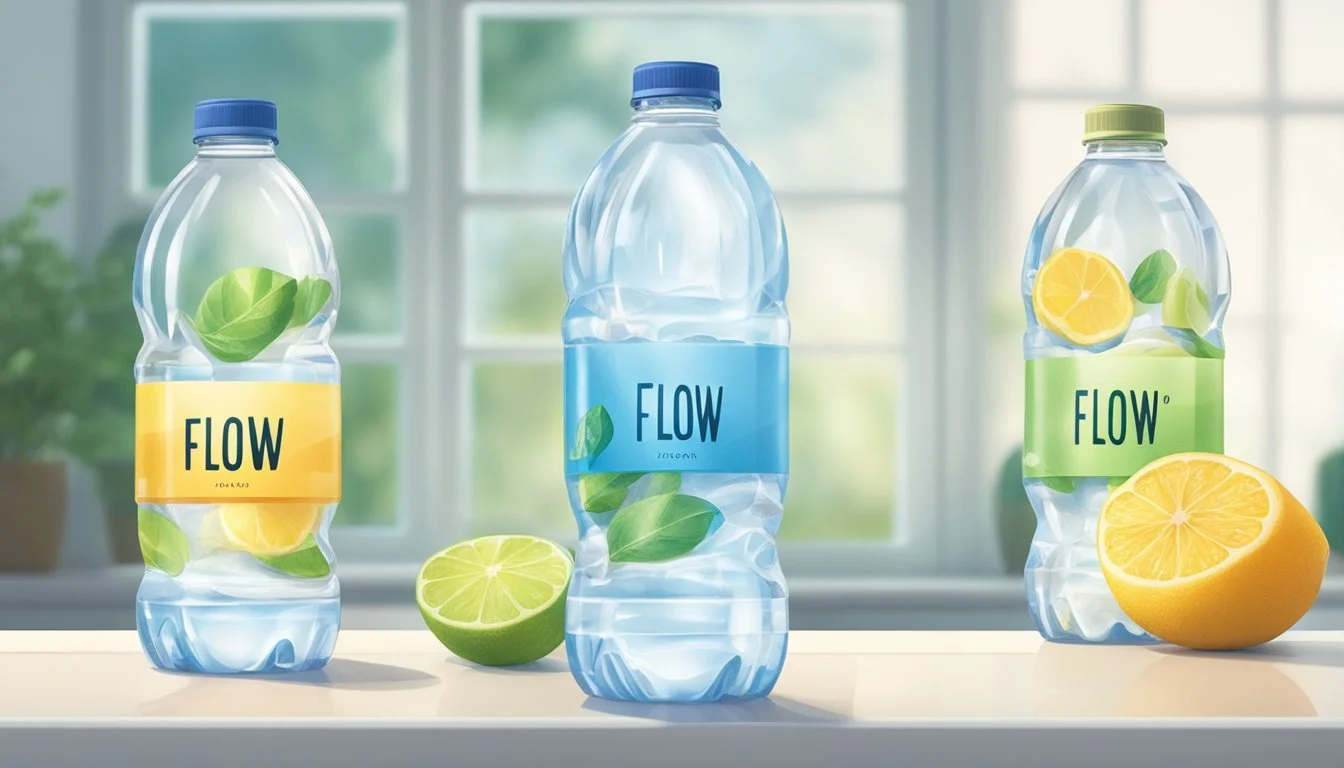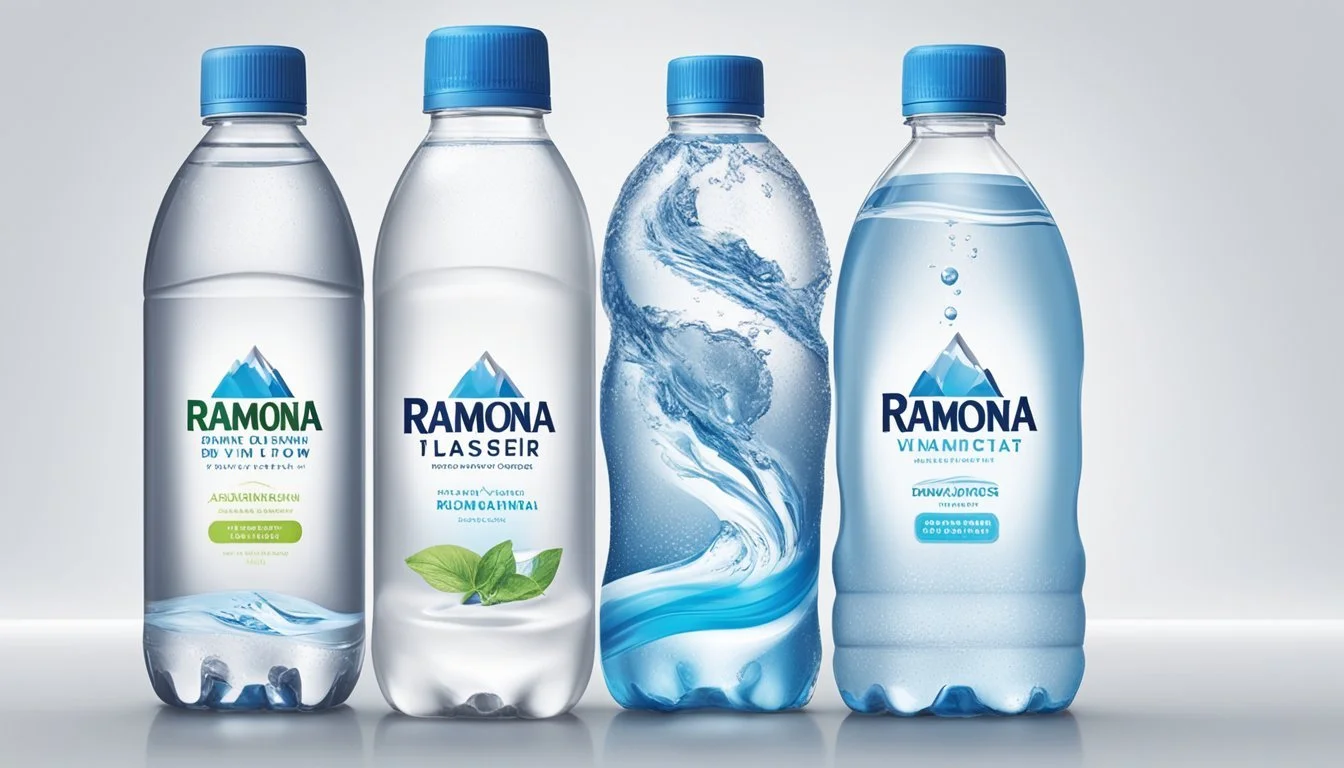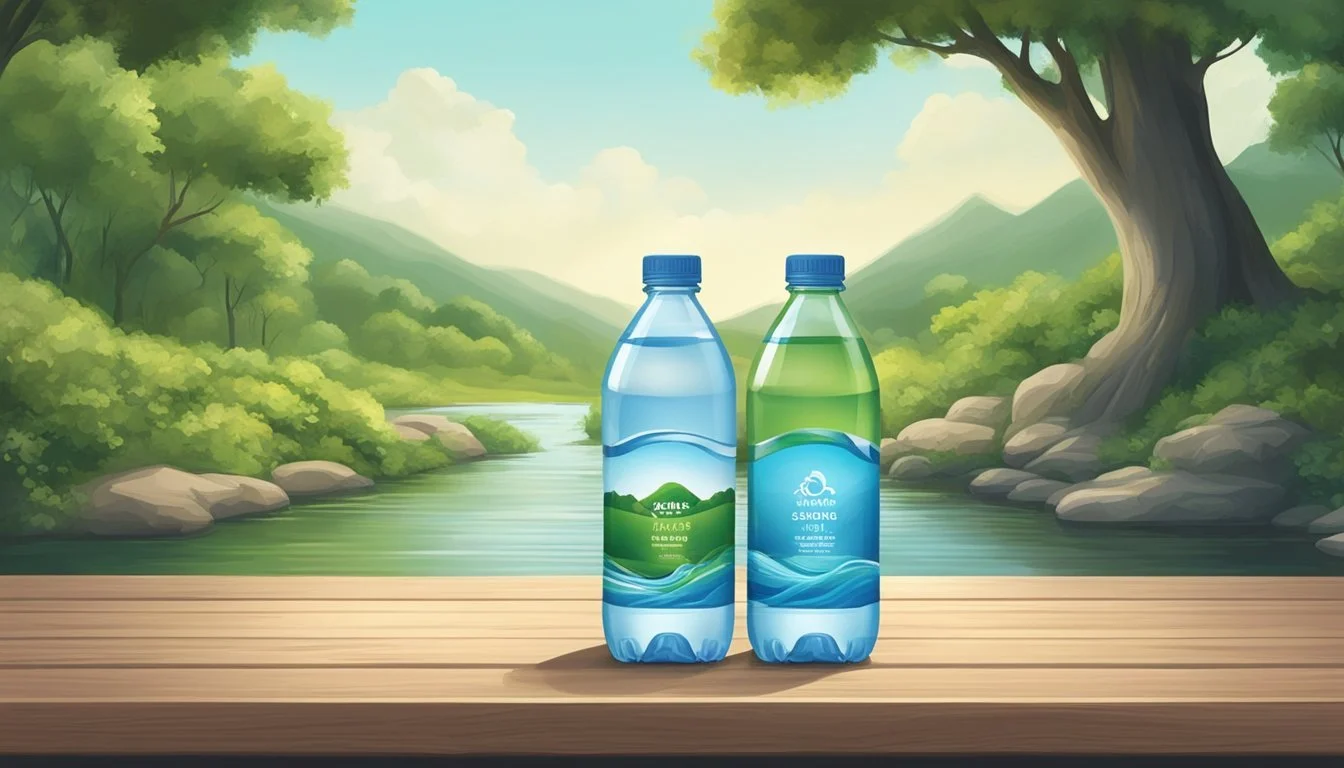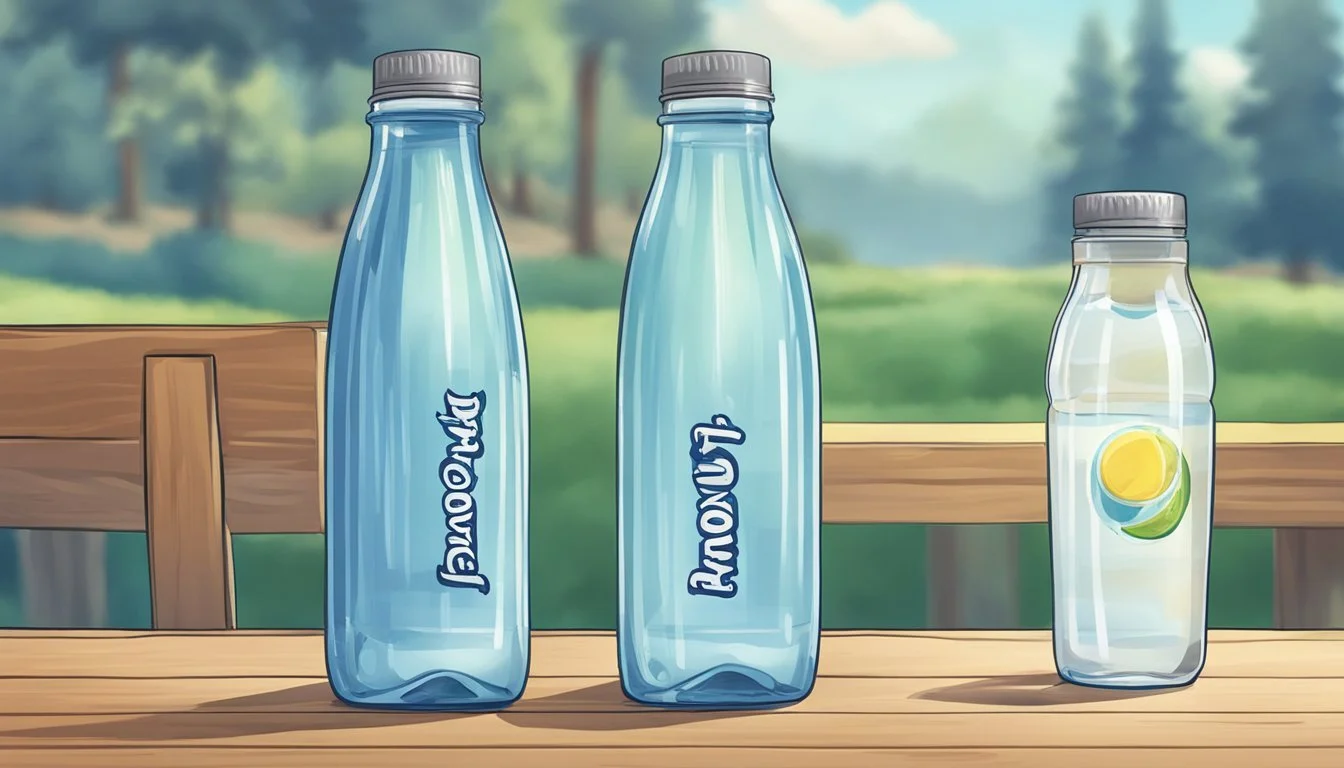Flow vs. Ramona
Which Bottled Water is Better? Comparative Analysis and Insights
Choosing between Flow and Ramona bottled water boils down to a few distinct characteristics. Flow water stands out for its eco-friendly packaging and naturally alkaline properties, providing a refreshing and neutral taste that appeals to many health-conscious consumers. It's packaged in a recyclable paper carton, which adds an environmental benefit.
Ramona, on the other hand, offers a distinct, clean taste with a hint of sweetness, making it a favorite for those who prioritize flavor over packaging. While it may not boast the same level of environmental friendliness as Flow, its taste profile is difficult to match.
Ultimately, the choice depends on individual priorities. Whether one's focus is on sustainability and health benefits or purely on taste, both Flow and Ramona offer compelling options in the competitive bottled water market.
Understanding Bottled Water
Bottled water comes in various types, each sourced and processed differently to offer distinct benefits. Hydration is crucial for health, and while bottled and tap water serve similar functions, there are differences in taste, additives, and regulations.
Types of Bottled Water
Purified Water is treated to remove impurities and contaminants. Common methods include distillation, reverse osmosis, and deionization.
Spring Water is sourced from natural springs. It's collected where water flows naturally to the surface.
Mineral Water contains dissolved minerals. It must come from a protected underground source and contain a minimum amount of minerals.
Alkaline Water has a higher pH level. It often contains added minerals to increase its pH above regular drinking water.
Importance of Hydration
Proper hydration is essential for overall health and well-being. It helps regulate body temperature, keeps joints lubricated, and supports cellular functions.
Bottled water provides a convenient way to stay hydrated. Drinking enough water daily can prevent dehydration, which can cause symptoms like headaches, dizziness, and fatigue.
Bottled options often promote unique benefits, such as added electrolytes or enhanced purification processes, to appeal to health-conscious consumers.
Bottled Water Vs. Tap Water
Tap Water is publicly supplied and regulated. It's generally safe to drink but may contain chlorine, fluoride, and other additives.
Bottled Water often boasts fewer contaminants and superior taste. Brands may use advanced filtration methods and additional minerals.
Key Differences include regulation standards, source, taste, and potential additives. Bottled water typically offers convenience with potential assurances of purity and taste, which can influence consumer choice.
Bottled water brands often highlight their specific benefits compared to tap water, helping consumers decide based on their preferences and concerns.
Evaluating Water Quality
When it comes to bottled water, the quality is often judged by its pH and acidity levels, mineral content, and purification processes. These factors can significantly impact taste, health benefits, and overall safety.
pH and Acidity
The pH level of water measures its acidity or alkalinity on a scale from 0 to 14. A neutral pH is 7, with lower values being more acidic and higher values more alkaline.
Flow water claims a pH of around 8 - 8.1, positioning it in the category of bottled alkaline water, which is often sought after for its potential health benefits.
Ramona, on the other hand, typically has a pH close to neutral at around 7. This level is standard for many natural spring waters, providing a more balanced option.
Mineral Content
Mineral content includes essential electrolytes like calcium, magnesium, and potassium that influence the water's taste and health benefits.
Flow boasts a high mineral content, rich in important electrolytes. This enhances the hydration qualities and taste profile, appealing to those who prefer mineral-rich water.
Ramona also contains vital minerals, though in slightly lesser quantities than Flow. It still offers a good mix of natural minerals, making it an excellent choice for everyday consumption.
Purification Processes
The method used to purify water can significantly impact its quality and safety.
Flow utilizes a process that combines reverse osmosis with natural filtration techniques. This ensures the removal of impurities while retaining essential minerals.
Ramona relies on natural spring sources and minimal processing. This approach maintains the purity and mineral content naturally found in spring water, though sometimes it might have slightly higher total dissolved solids (TDS) compared to waters processed through reverse osmosis.
Profile: Flow Water
Flow Water is derived from a natural source and boasts attributes that enhance its taste, hydration quality, and environmental benefits.
Source and Origin
Flow Water originates from a natural spring in Ontario, Canada. The source is known for its mineral-rich properties, which contribute to the water's unique mineral profile. This ensures a consistent and high-quality composition that sets Flow apart from other brands.
Using natural springs ensures that the water is naturally alkaline, with a pH that supports optimal hydration. The commitment to source integrity highlights Flow's dedication to providing naturally sourced hydration without relying on artificial treatments.
Taste and Electrolytes
Flow Water is recognized for its clean and refreshing taste. The natural mineral content, including essential electrolytes like magnesium, calcium, and potassium, enhances hydration.
These minerals not only contribute to the water's smooth taste but also support overall wellness. The balance of natural electrolytes makes Flow ideal for those looking to maintain proper hydration during activities and daily life.
The water's taste profile is crisp, reflecting its natural origins and lack of impurities.
Packaging and Environment
Flow Water sets itself apart with its eco-friendly packaging. Unlike plastic bottles, Flow uses Tetra Pak packaging that is primarily plant-based and fully recyclable. This approach reduces plastic waste and lowers environmental impact.
The cartons are BPA-free, ensuring safety and sustainability. Flow's commitment to sustainability includes efforts to minimize carbon footprints and promote the use of renewable materials.
By choosing biodegradable packaging, Flow Water provides an environmentally responsible alternative to traditional bottled water brands.
Profile: Ramona Water
Ramona Water stands out for its natural spring source, unique mineral composition, and commitment to sustainable packaging.
Source and Origin
Ramona Water is sourced from pristine natural springs located in the Appalachian Mountains.
This region is known for its rich, unspoiled environment, providing a reliable source of pure, high-quality water. The spring water is collected and bottled at the source, ensuring its natural properties are preserved.
Ramona's origin guarantees that consumers receive water that is both clean and refreshing, with minimal processing involved. This careful sourcing process contributes significantly to the brand's reputation for quality and purity.
Minerals and Hydration
Ramona Water contains a balanced mix of essential minerals, including calcium, magnesium, and potassium.
These minerals not only enhance the taste but also provide vital nutrients that support hydration. The mineral content is naturally occurring, thanks to the water's journey through layers of mineral-rich rocks.
With a slightly alkaline pH, Ramona Water can help balance the body's acidity levels, promoting better overall health. The unique mineral combination makes it a great choice for those looking to maintain optimal hydration.
Packaging and Sustainability
Ramona Water is committed to environmentally friendly packaging solutions.
The brand uses both glass bottles and reusable options to minimize environmental impact. By opting for glass bottles, Ramona reduces plastic waste and encourages consumers to choose sustainable practices.
When single-use plastic bottles are used, they are designed to be recyclable, further supporting environmental sustainability. Ramona's dedication to eco-conscious packaging reflects a broader commitment to preserving the natural beauty of the spring sources they rely on.
Comparative Analysis
Flow and Ramona bottled waters differ in taste, cost, and nutritional content, each offering unique advantages to consumers.
Taste Tests and Preferences
In taste tests, Flow water is often described as having a clean, crisp flavor due to its naturally alkaline pH level and mineral-rich content. This water is favored for its smooth mouthfeel and slight mineral taste, owing to its origins from Canadian springs.
Ramona water, sourced from pristine environments, boasts a pure, refreshing taste. Its ultra-filtration processes, which include reverse osmosis and ultraviolet exposure, ensure high purity levels. The flavor profile leans towards a neutral taste, free from noticeable mineral undertones, appealing to those who prefer a more subtle drinking experience.
Cost and Convenience
When comparing costs, Flow tends to be on the higher end of the price spectrum. This is attributed to its premium branding, sustainable packaging, and the natural filtration processes it undergoes. Flow's water comes in eco-friendly paperboard containers, aligning with environmentally conscious consumer trends.
Ramona, while also positioned as a high-quality brand, might offer more competitive pricing. Despite its sophisticated filtration, which includes ionization and addition of electrolytes, Ramona maintains affordability. Both brands are widely available in supermarkets and online, providing convenience through multiple purchasing options.
Health and Nutritional Values
Nutritional content is a vital factor. Flow's water is naturally enriched with essential minerals such as calcium, magnesium, and potassium, contributing to its alkalinity with a pH of around 8.1. These minerals support bodily functions and overall health benefits.
On the other hand, Ramona water goes through extensive purification methods, including micro-filtration and ionization to achieve a high purity level of 99.9%. This purification process results in fewer naturally occurring minerals, but the water is often infused with electrolytes like sodium and potassium to enhance hydration.
Each brand's nutritional benefits cater to different consumer needs, with Flow focusing on natural mineral intake and Ramona emphasizing purity and added electrolytes for hydration.
Environmental and Social Considerations
Examining the environmental impact and social considerations of bottled water is critical. Many key aspects are directly affected by the water footprint, the bottling process, and the issues surrounding recycling and waste.
Water Footprint
The water footprint of bottled water brands varies significantly. Water extraction for bottled water can strain local water supplies, especially in drier regions. High consumption rates further amplify this strain, impacting nearby communities and ecosystems.
In comparison, filtered tap water often has a smaller water footprint, though its quality depends on the filtration system used. Brands like Flow claim to source water sustainably, but it is essential to verify these claims through third-party certifications.
Bottling Process
The bottling process involves several environmental and social challenges. Single-use plastic bottles are the primary packaging choice, contributing significantly to pollution. Energy consumption during manufacturing releases considerable CO2, driving climate change issues.
Brands producing bottled water in PET containers release between 1.6 and 22 oz of CO2 per 50 oz of water. Alternatives such as glass or recycled bottles can reduce this footprint but may not be widely adopted due to costs and logistical issues.
Recycling and Waste
Recycling rates for plastic bottles remain low. Single-use plastic bottles often end up in landfills or oceans, contributing to widespread environmental damage. Bottled water brands need to encourage higher recycling rates and use more recycled materials in their production.
Brands like Pure Life offer recycling programs, but effectiveness varies by region. Neighborhood grocery stores can play a crucial role by providing recycling bins and promoting the use of reusable bottles, thereby fostering better waste management practices.
Consumer Perspectives
Consumers often base their choices on brand trust, loyalty, and the ease of accessing and purchasing the product.
Brand Loyalty and Trust
Brand loyalty plays a significant role in consumer choices between Flow and Ramona. Flow is often celebrated for its natural alkaline water and sustainable packaging, which appeals to environmentally conscious consumers. This trust is built on consistent quality and transparent sourcing from Canadian springs.
On the other hand, Ramona caters to a niche market with its sparkling water directly sourced from the French Alps. Their consumers appreciate the premium feel and unique mineral composition. Despite not being a household name, Ramona gains loyalty by promising an authentic and luxurious drinking experience, much like Perrier.
Accessibility and Availability
Accessibility and availability are crucial for consumers. Flow is widely recognized for being available in major grocery stores and convenience outlets. Their strategic placement ensures that consumers can easily find their products, reinforcing their market presence.
Ramona, meanwhile, might be less accessible in everyday grocery stores and more commonly found in specialty stores or high-end restaurants. This limited availability can either add to its prestige or act as a barrier for new customers trying to access the brand.
In summary, Flow wins in convenience, while Ramona targets a more exclusive and premium market, making it a choice based on accessibility and consumer priorities.
Final Thoughts on Flow Vs. Ramona
When comparing Flow and Ramona, several factors come to light.
Flow stands out for its eco-friendly packaging and alkaline pH level. Packaged in 100% recyclable and renewable materials, it appeals to environmentally conscious consumers. The water is sourced from natural springs and boasts a smooth, clean taste.
Ramona, on the other hand, offers pure, crisp water sourced from artesian wells. It lacks the alkaline profile of Flow but makes up for it with its straightforward, no-nonsense approach. The water is bottled in BPA-free plastic, providing a safe option for daily hydration.
Flow's commitment to sustainability extends to its production processes, minimizing carbon footprints. This might persuade those prioritizing environmental impact.
Ramona’s simplicity caters to those who value traditional, trusted hydration without additional features. The brand focuses on purity and safety, ensuring a reliable drinking experience.
Taste Profiles:
Flow: Smooth, slightly sweet.
Ramona: Crisp, refreshing.
Packaging:
Flow: Recyclable, renewable materials.
Ramona: BPA-free plastic.
Ultimately, the choice between Flow and Ramona can hinge on personal preferences. Environmental impact, taste, and packaging play pivotal roles in deciding between the two. Either way, both brands offer high-quality hydration solutions.
More About Flow
Flow vs Whole Foods Italian Still Mineral water: Which Bottled Water is Better?
Mountain Valley Spring Water vs Flow: Which Bottled Water is Better?






